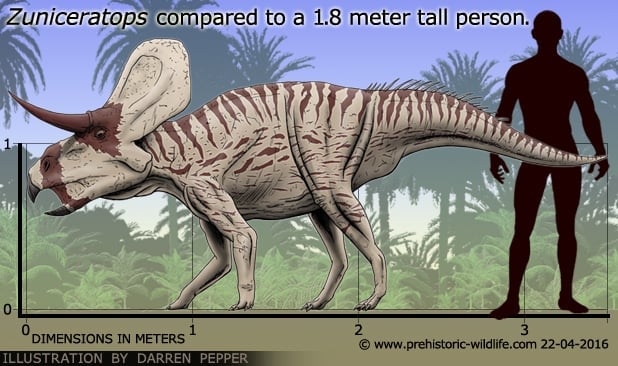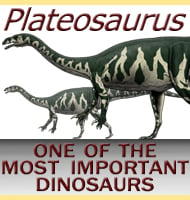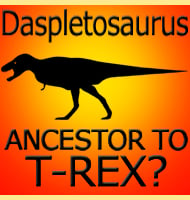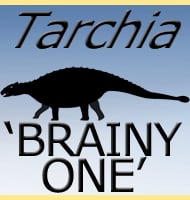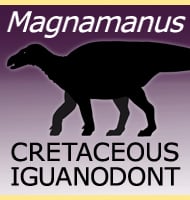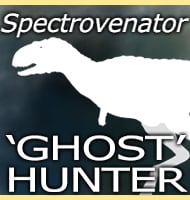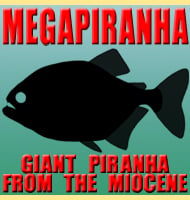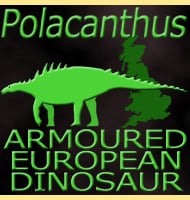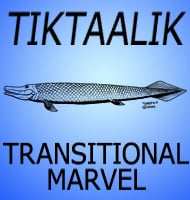In Depth
Zuniceratops is very important to the fossil record as it is the first ceratopsian known to have brow horns and also the oldest species recovered from North America. This lends weight to the theory that the horned ceratopsians evolved in North America as opposed to Asia.
The frill on Zuniceratops was fenestrated, meaning it was not solid bone but had two large holes in the bone that were grown over with skin. This would have made the frill considerably lighter than it would have been if it was solid throughout, but was not likely a defensive structure as these skin covered holes would not have stopped a predator. Instead it’s more likely that the frill was for displaying to others of its species.
In Juvenile specimens the teeth are single rooted, not becoming double rooted until they mature with age. Also the horns are believed to have been continuously growing throughout their age, the largest specimens being from the oldest individuals.
Further Reading
– Zuniceratops christopheri n. gen. & n. sp., a ceratopsian dinosaur from the Moreno Hill Formation (Cretaceous, Turonian) of west-central New Mexico – Lower and Middle Cretaceous Terrestrial Ecosystems, New Mexico Museum of Natural History and Science Bulletin 24: 307–317. – D. G. Wolfe & J. I. Kirkland – 1998. – New information on the skull of Zuniceratops christopheri, a neoceratopsian dinosaur from the Cretaceous Moreno Hill Formation, New Mexico. pp. 93–94, in S. G. Lucas and A. B. Heckert, eds. Dinosaurs of New Mexico. – New Mexico Museum of Natural History and Science Bulletin No. 17. – D. G. Wolfe – 2000.
